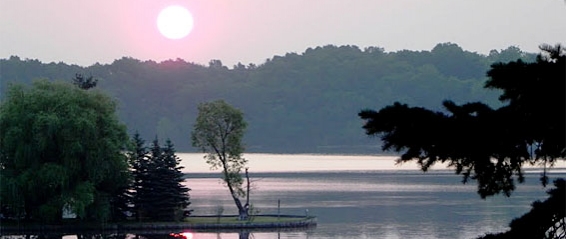What Does it take to Restore a Lake?
John and I were having a too late-night philosophical ramble about what it takes to restore a lake. I said, “To restore a lake you have to think like the lake.” John said “that’s stretching the hyperbole a bit.” I said, “Thinking like a lake means taking a lake-centric view toward restoration. Ask the lake what it needs and it’ll tell you. The lake’s the victim.”
A Paradigm Shift: From Symptom Treatment to System Restoration
Thinking like a lake means two things. First, it means appreciating the lake as a living system. Restore system health and “symptoms” will retreat. Restore the lake’s inherent ability to convert/divert nutrients into the food web and the lake has a fighting chance of sustaining itself under the continued weight of nutrient overloading from the watershed.
Second, it means taking into deeper consideration the lake’s relationship with the watershed. Restoring the lake won’t restore the watershed. But restoring the lake will force the issue of proper watershed management. When the lake is restored the watershed is next.
The Whole Lake Paradigm: Think System
When a lake is classified eutrophic, it means the system is broken. The lake’s ability to metabolize and convert nutrients is failing under the weight of nutrient overloading. The watershed is fertilizing the lake and the lake can’t keep up. Weeds and algae take over, lake-bottom muck builds, and fish, clean water, and quality of lake-life suffer.
The watershed has won. Waiting for watershed management to reduce nutrient overloading does not take care of the immediate problem in the lake. Waiting for the watershed only reinforces the lake’s dependency on government policy. From the lake’s perspective, resolve the problems with the nutrient conversion system and the lake will take care of itself.
Whole-Lake Solution: Thinking Like a Lake – Acting FOR the Lake
To restore a eutrophic lake to a place where it can sustain itself, 5 things have to happen.
First, the community responsible for the lake has to agree that the health of the lake is paramount.
Throwing money at symptoms doesn’t fix what’s wrong with the lake – it fixes what people don’t like about the lake. Committing to fix what’s wrong with the lake system is taking responsibility from the lake’s perspective. It’s giving the lake what it fundamentally needs to be healthy.
Second, fixing what’s wrong with the lake means fixing the lake’s nutrient reduction/conversion system.
- Restore and sustain dissolved oxygen
- Restore, accelerate and sustain aerobic bacterial digestion of nutrients
- Restore and stabilize diatomic production
- Restore nutrient filtering and conversion with in-lake habitat
Third, restoration is both an outcome and a process.
Restoring a lake and keeping it that way takes professional management. Management should be guided by a company that takes personal responsibility for the health of the lake by continually monitoring results and maintaining the technology to ensure optimum long-term health.
Fourth, restoration should be affordable.
Restoring and maintaining lake health should be cost-effective, making the most effective technology affordable for lake communities. Just as restoration requires a shift in technological thinking, so too should economic thinking. The good news (a gift from the lake) is that working with nature is cost-effective.
Finally, communities need to become advocates for their lake’s health.
People who live on or around a lake have a tremendous responsibility to speak for the lake. This is not an easy task. Speaking for the lake’s interests sometimes means putting self-interests aside. The reward is that the more the community comes together with one lake voice, the more they take control of the future health of the lake and a deeper concern for how the watershed is managed.
The more people look, think, speak and act from the lake’s perspective, the better shot the lake/reservoir has of doing what it’s supposed to do – grow fish, give people a clean glass of water, and a place where kids can swim.
Lake Centric Thinking: Whatever IT Takes to Restore a Lake
Lake Centric thinking means making happen whatever needs to happen to restore a lake. Thinking ‘from and for the lake’ instead of ‘at the lake’ opens a door of opportunity to give the lake what it needs: technologically, communally, financially, and sustainably. The good news is that the lake has the answers. We just to have to pay attention.
























